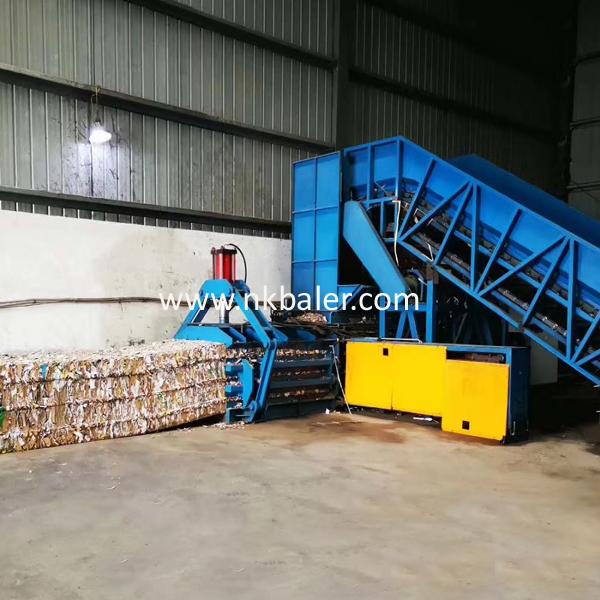The Nick waste paper baler features seven wire feeding channels,allowing the number of wires used for bundling to be determined based on the expansion coefficient of different materials.This is also the most traditional method of wire feeding in domestic baling.Moreover,our servo system enables the baler to achieve a weight density that is 5% to 8% higher than competitors under the same hydraulic cylinder and working pressure conditions.This is a major highlight of our servo system.The special techniques for wire feeding in waste paper balers primarily involve how to effectively use metal wires (usually iron wire or plastic strapping) to secure and maintain the stability of the bales during the process of baling waste paper.This technique is crucial for improving the compactness of the bales and ensuring safety during transportation and storage.Here is a detailed discussion of the special techniques for wire feeding in waste paper balers:Selection and Treatment of Iron Wire Material Selection:High-quality iron wire with strong tensile strength is usually chosen to ensure load-bearing capacity and durability during the baling process.Surface Treatment:To prevent rusting and extend its lifespan,the surface of the iron wire undergoes galvanization or plastic coating.Diameter and Length:The appropriate diameter and length of the iron wire are selected based on the model of the baler and baling requirements.Design of the Wire Feeding Mechanism Automatic Wire Feeding System:Modern waste paper balers are typically equipped with an automatic wire feeding system that can supply iron wire continuously and accurately.Guidance and Positioning:The wire feeding mechanism requires precise guidance and positioning mechanisms to ensure that the iron wire can pass through the baling material without errors.Tension Control:Tension control during the wire feeding process is very important as it affects the tightness of the bale and the lifespan of the iron wire.Baling Process Compression of Waste Paper:Waste paper is fed into the baler and is strongly compressed by the hydraulic system to form dense bales.Wire Feeding and Bundling:After compression,the waste paper bales are bound by the wire feeding mechanism.The iron wire enters from one side of the baler,passes through the compressed waste paper,and is closed and cut off on the other side.Formation and Release:The iron wire is twisted or woven to maintain its closed state,and then the bale is released from the machine.
Overall,the wire feeding technique in waste paper balers is a critical step in the waste paper recycling process,directly affecting baling efficiency and transportation safety.With technological advancements,this process is becoming more automated and intelligent,significantly enhancing the operational efficiency and safety of the waste paper recycling industry.The wire feeding technique in waste paper balers ensures that iron wires are precisely and quickly bound around the waste paper through an efficient automated system,enhancing the stability of the bales.
Post time: Aug-29-2024
